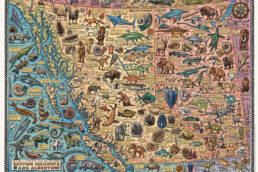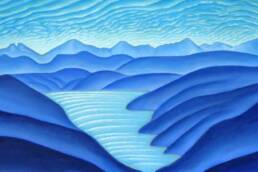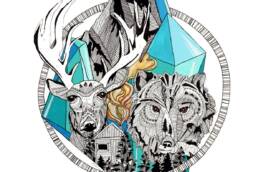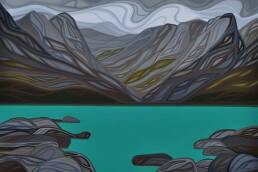Ray Troll’s paintings have been described as hallucinatory and scientifically surreal. But what do you expect when your muse is 67 million years old. By Vince Hempsall
Ray Troll is strolling toward his art gallery on Creek Street in Ketchikan, Alaska, speaking to me on his cell phone when he spies a kingfisher. He stops, admires it, and tells me the lack of cruise-ship traffic due to the global COVID-19 pandemic means he’s been seeing more wildlife, including harbour seals in the creek and whales in Tongass Narrows. It’s no surprise Troll is in touch with his natural surroundings. The 66-year-old fine artist and self-described “paleo nerd” has been fascinated by fauna, specifically dinosaurs and fossils, since he was a child. “I picked up a crayon at age four and drew a Tyrannosaurus,” he says, “and I’ve been drawing them ever since.”
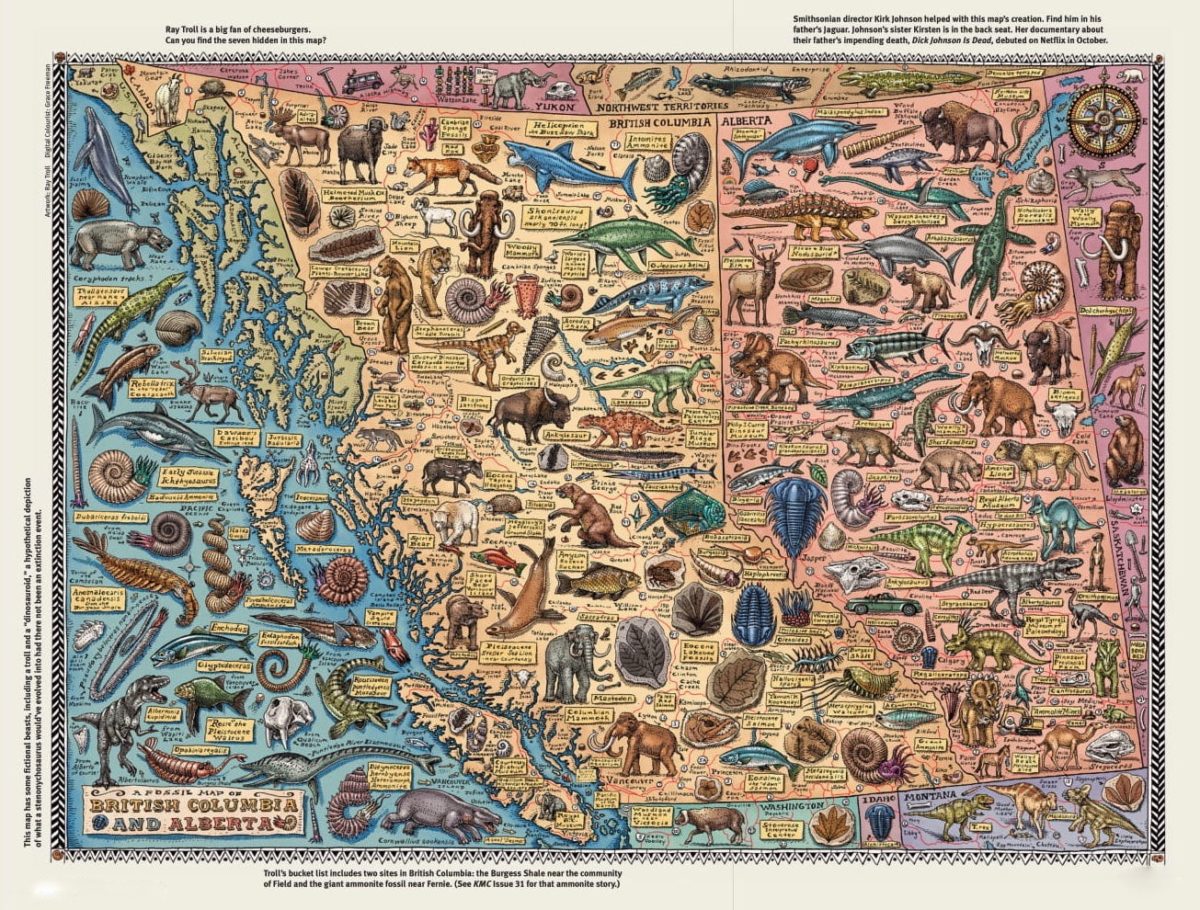
Born into an American Air Force family, Troll lived around the world with his five siblings before getting a Master of Fine Arts at Washington State University in the city of Pullman, south of Spokane. He graduated in 1983 and accepted an invitation from his older sister to run a fish shop in Ketchikan, on Revillagigedo Island, a five-hour ferry ride from Prince Rupert, British Columbia.
That job lasted the summer, but he never left. He now makes his living as an artist, specializing in colourful paintings of both living and prehistoric beasts, which he makes into prints, puts on t-shirts and sells to tourists. He’s also collaborated on many books and projects with various scientists, including Kirk Johnson, the sant director of the Smithsonian National Museum of Natural History, with whom he created this fossil map of British Columbia and Alberta. In fact, Troll has so many scientist friends that an extinct genus of herring, the Trollichthys, was named after him, as was a species of ratfish found near New Zealand called Hydrolagus trolli.
At the end of our phone conversation, I ask Troll if he’d like to be discovered as a fossil by future generations. “Kirk taught me there are two states in the world: erosion and deposition,” he says. “Ketchikan will probably erode away. If you want to be a really good fossil, move to New Orleans.”
To find the full-size version of this map, visit www.trollart.com.
Vince Hempsall
Vince Hempsall lives in the beautiful mountain town of Nelson, British Columbia, where he spends his time rock climbing, backcountry skiing and mountain biking (when not working). He is the editor of Kootenay Mountain Culture Magazine and online editor for the Mountain Culture Group.
Related Stories
KMC Cover Artist Scott Dickson Blows Up
Nelson, BC resident, and mega talented artist Scott Dickson has teamed up with the forces of nature to let loose a…
Artist Profile: Kate Zessel
Whistler, British Columbia, illustrator Kate Zessel draws her inspiration from the mountains where she lives and from…
Artist Profile: Jody Bruce
No people, animals or buildings. Nothing man-made. Jody Bruce only paints trees, mountains, water, rocks, the land, the…
Artist: The Circus Acts Insomniacs
Whether Fernie, British Columbia, knows it or not, its entertainment scene has been taken up a notch by a fantastical…
Cool New Video by Nelson BC’s Best Western Hotel
The world of the webisode gets funner by the day. This new piece by the local Nelson family that runs the town's Best…


